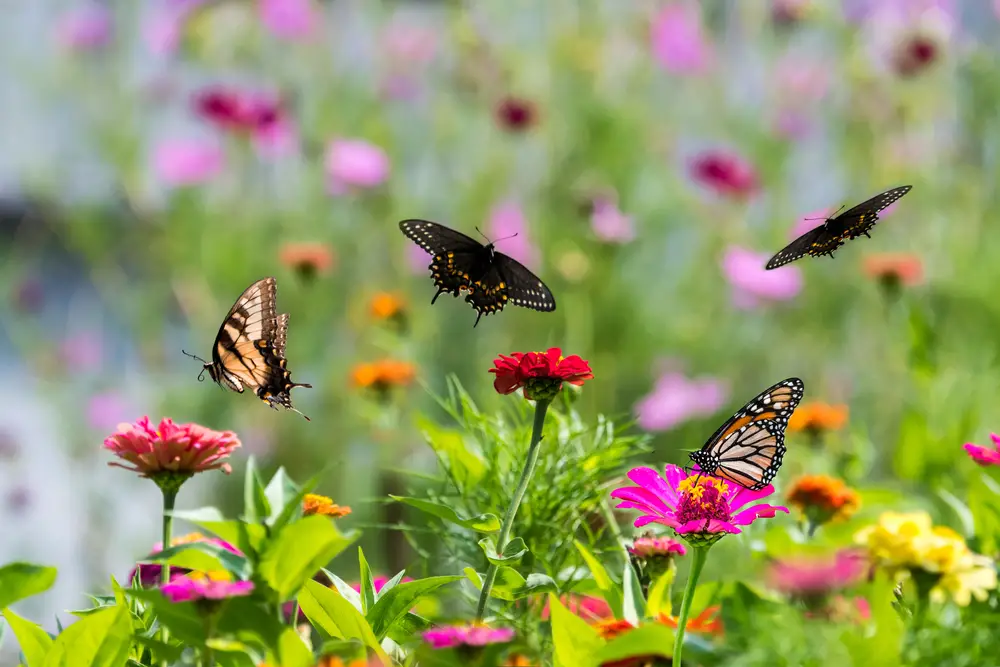Are you fond of butterflies and want to see more of them in your yard? A butterfly garden is your answer. Making one may seem complicated, but it’s pretty easy. Here’s how to create a butterfly garden with ease.
To create a butterfly garden with ease, take the following steps:
- Set realistic expectations
- Know your climate
- Choose the right size garden
- Plant colorful, fragrant flowers that bloom from spring to fall
- Choose a sunny spot
- Offer sunbathing stones
- Make it organic
- Provide shelter
- Include a salt lick and sugar water
Why A Butterfly Garden Is Beautiful And Practical
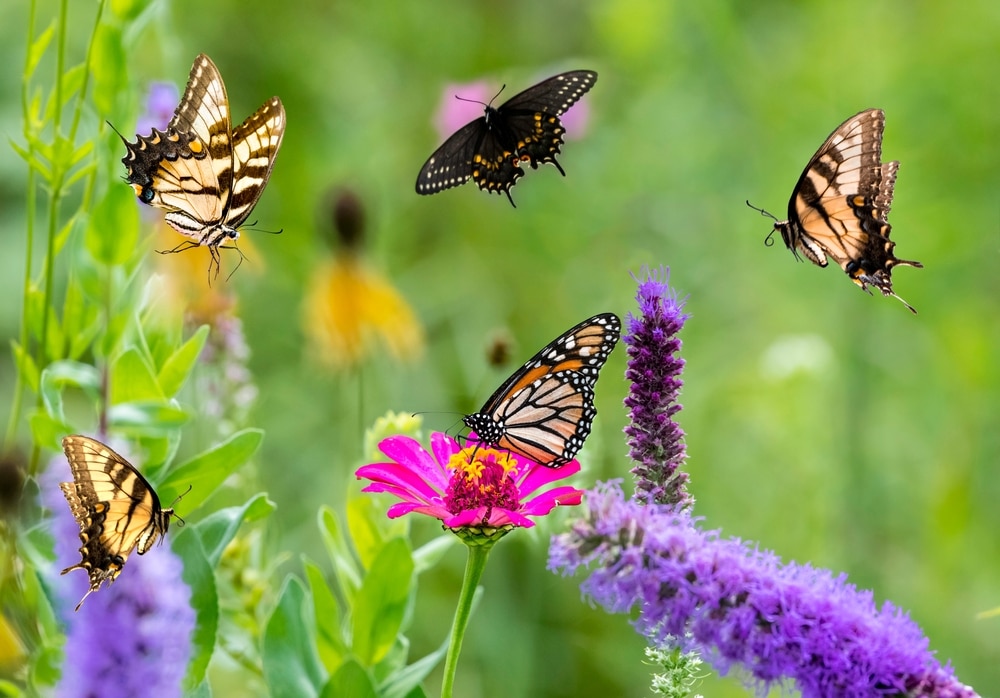
Butterflies are visually stunning and peaceful insects (so be careful when handling them!). They come in many colors and patterns, and watching a butterfly gracefully fly by is quite peaceful. Even without butterflies, a butterfly garden is full of color.
Butterflies are one of the top pollinators in the world, meaning they transfer pollen from flower to flower, which fertilizes the flowers. Without this fertilization, flowers couldn’t fruit and develop seeds. So, even if you created a garden without butterflies in mind, you’d still want them to come around.
How To Create A Butterfly Garden With Ease
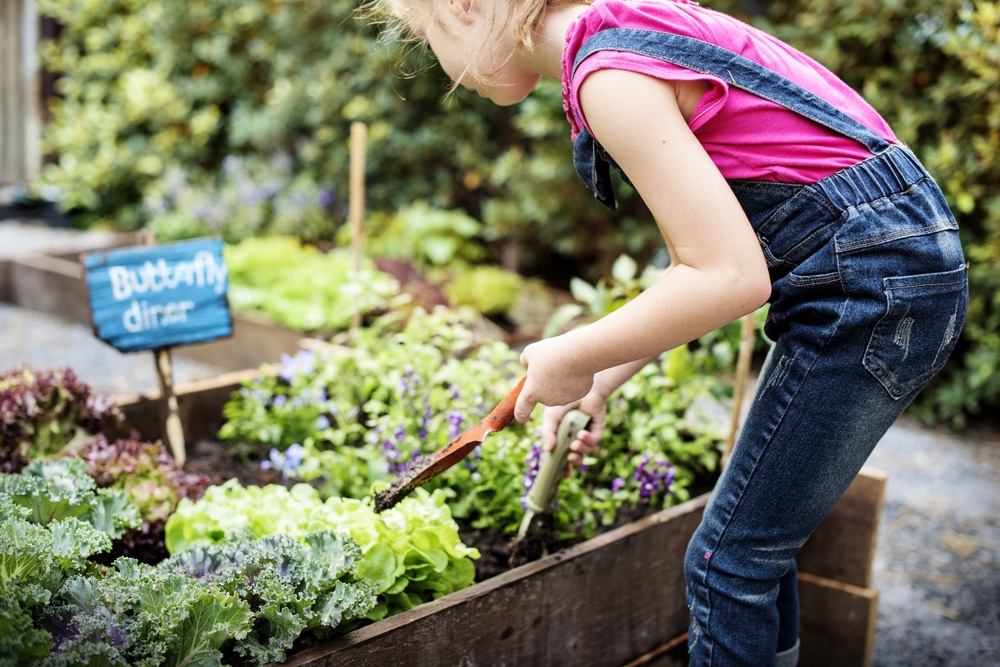
Creating a butterfly garden is fun, and the results are worth it. You’ll see butterflies every day during the warmer months of the year, and you’ll enjoy a variety of flowers.
Thankfully, creating a butterfly garden is easy. All you need to do is follow the steps below.
Let’s start with setting realistic expectations.
Set Realistic Expectations
Butterflies are shy and elusive creatures. Once you start your butterfly garden, they won’t all show up in one day. Be patient, and give it a couple of weeks.
It’s not unrealistic to expect quite a few butterflies after that point (5-10 at one time, in my experience). Just don’t expect to see them any earlier than March or later than November. You can expect to see most butterflies in mid to late summer!
Understand Your Climate And What That Means For Butterflies
Winter is a cold season in most climates, entirely unsuitable for butterflies. Butterflies require plenty of warmth and sunlight to survive.
With their harsh winters, this means northern regions can’t support butterflies outside of the spring to early fall months.
Southern regions, on the other hand, experience milder winters, and the weather stays relatively warm all year. This means butterflies can survive and stick around even in the winter!
Choose A Size For Your Butterfly Garden
A butterfly garden can be any size you like! Folks will make butterfly gardens as small as one flower pot or as big as several feet in diameter. It all depends on how much space you want to dedicate to a butterfly garden and how many butterflies you want to attract (a bigger butterfly garden will mean more butterflies).
Fill Your Butterfly Garden With Bright And Colorful Flowers
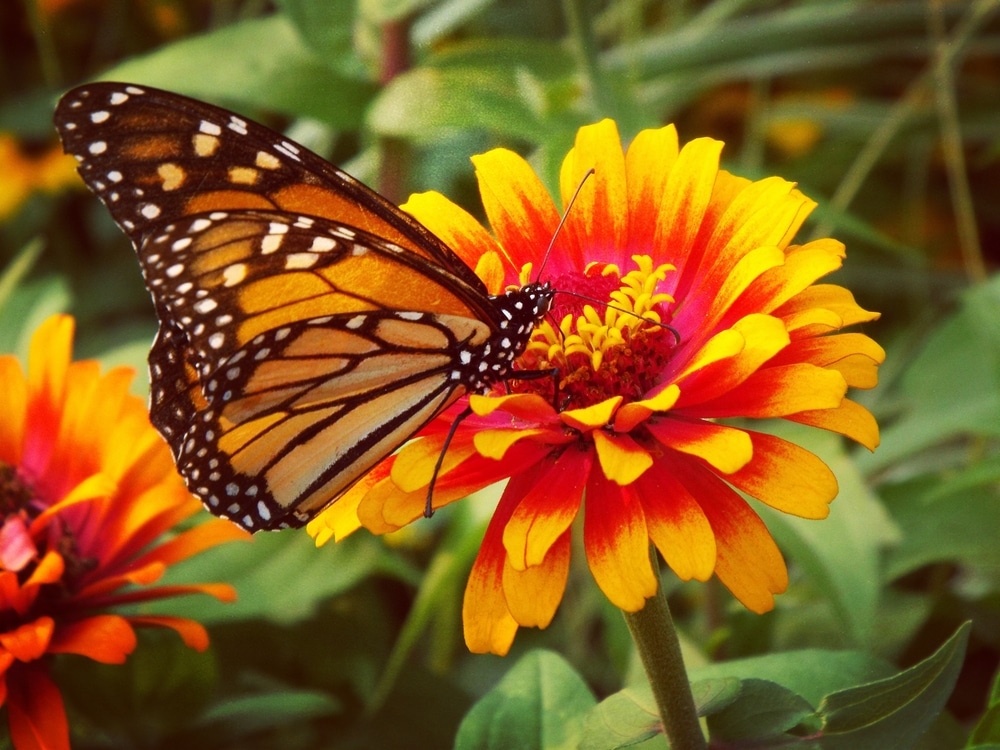
Butterflies love colors. They have a great range of sight and can see the whole spectrum of color (unlike bees, which are colorblind to red and are less drawn to orange and yellow colors too). Colors, which indicate a rich nectar source, catch their eye when passing by.
Here are some examples of flowers butterflies love.
Blazing Star
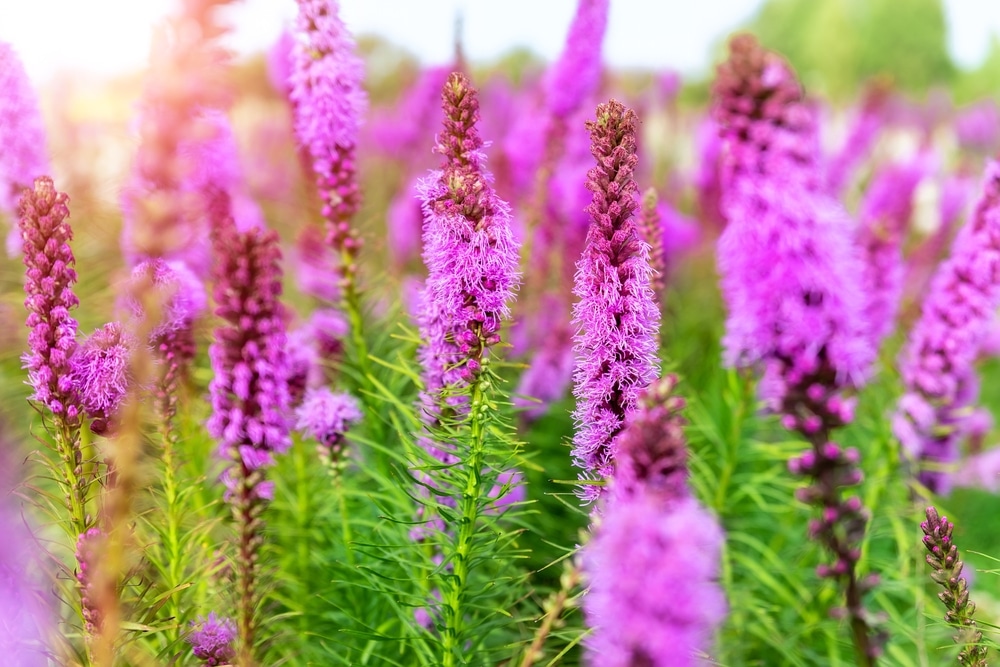
Blazing star flowers are so-named because they grow in slender spires with fuzzy blossoms at the top, so they resemble shooting stars. They’re purple or bright white.
Zinnias
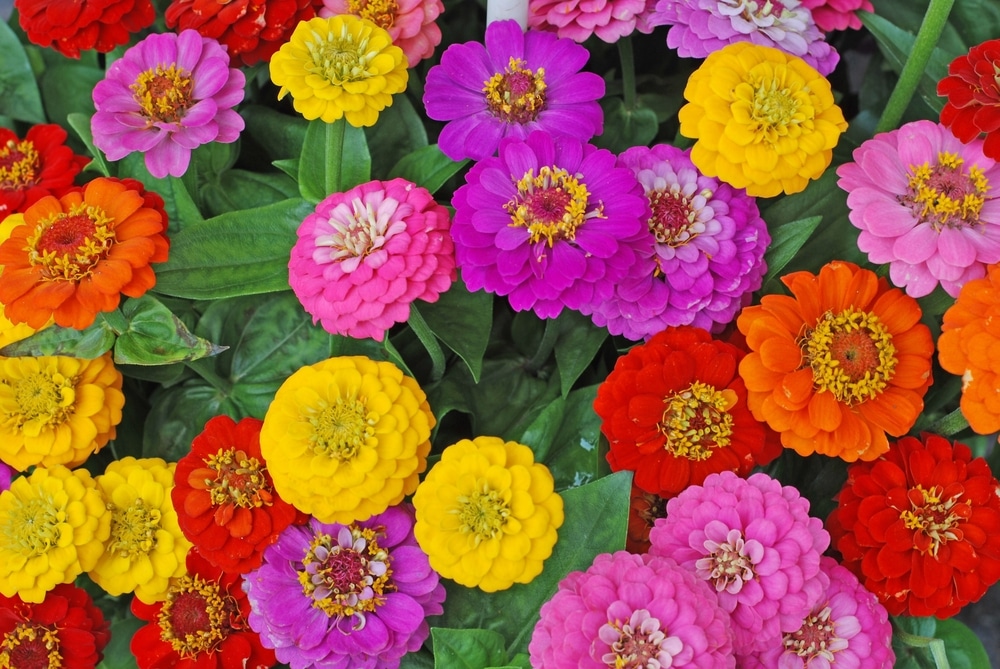
Butterflies love zinnias because they come in various bright colors, including purple, yellow, white, red, orange, and pink.
Coneflowers
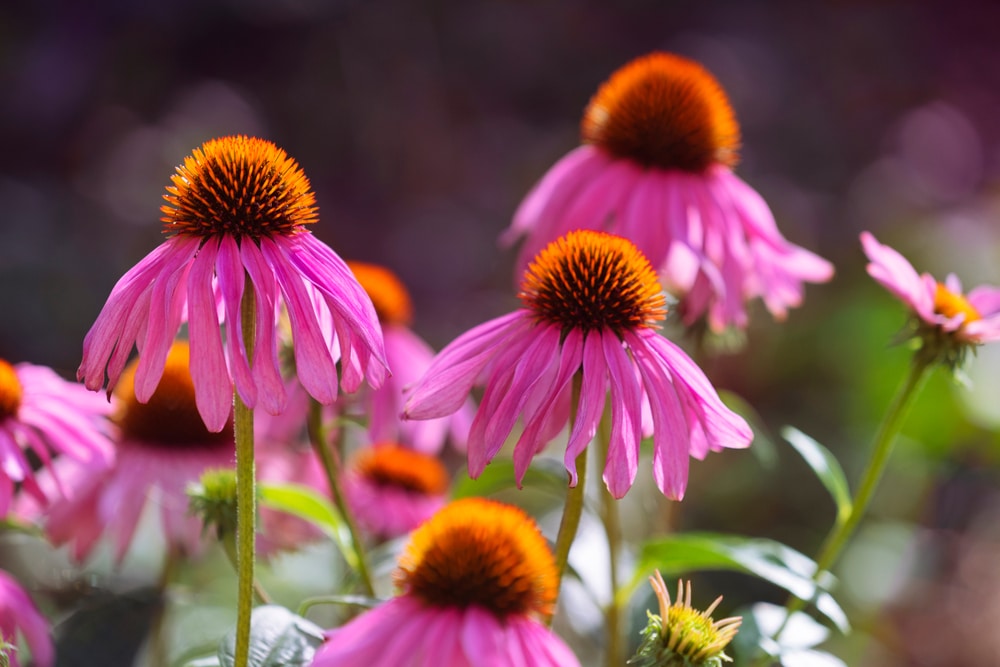
Coneflowers have large, wide blossoms that are welcoming to butterflies. Their petals are big and vibrant and come in colors butterflies love, including white, orange, pink, yellow, and red.
Marigolds

True to their name, marigolds come in various golden-hued colors, including yellow, orange, and red. They add a nice variety of colors to your garden and attract butterflies too.
Yarrow
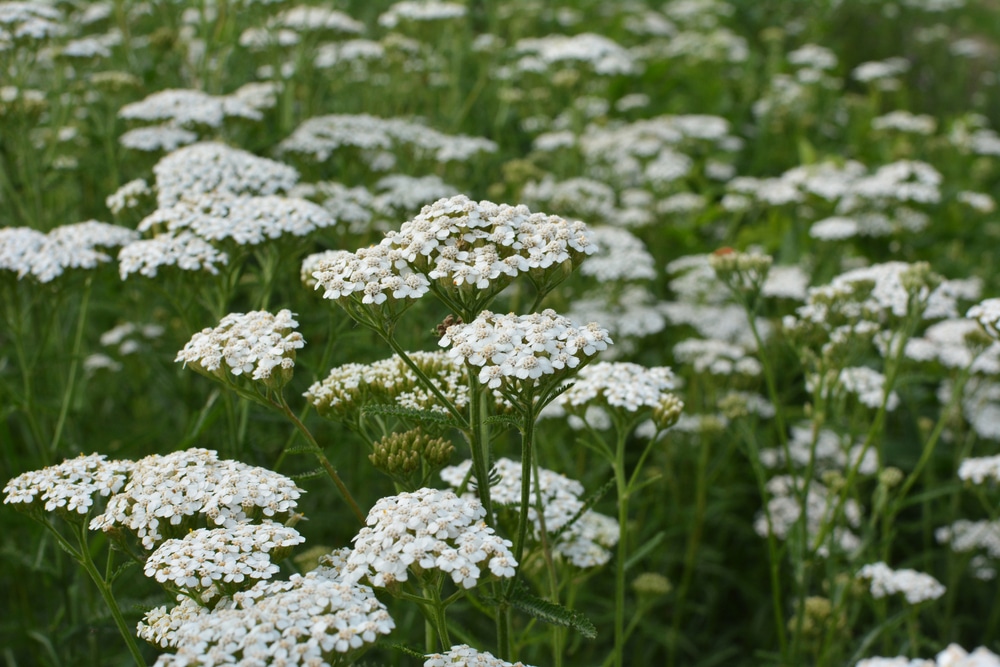
Yarrow grows in slender stalks with clusters of small, daisy-like flowers at the end. Yarrow comes in pastel colors, like cream and light purple, and more vibrant hues, such as yellow, orange, pink, and red, which butterflies prefer.
Goldenrod
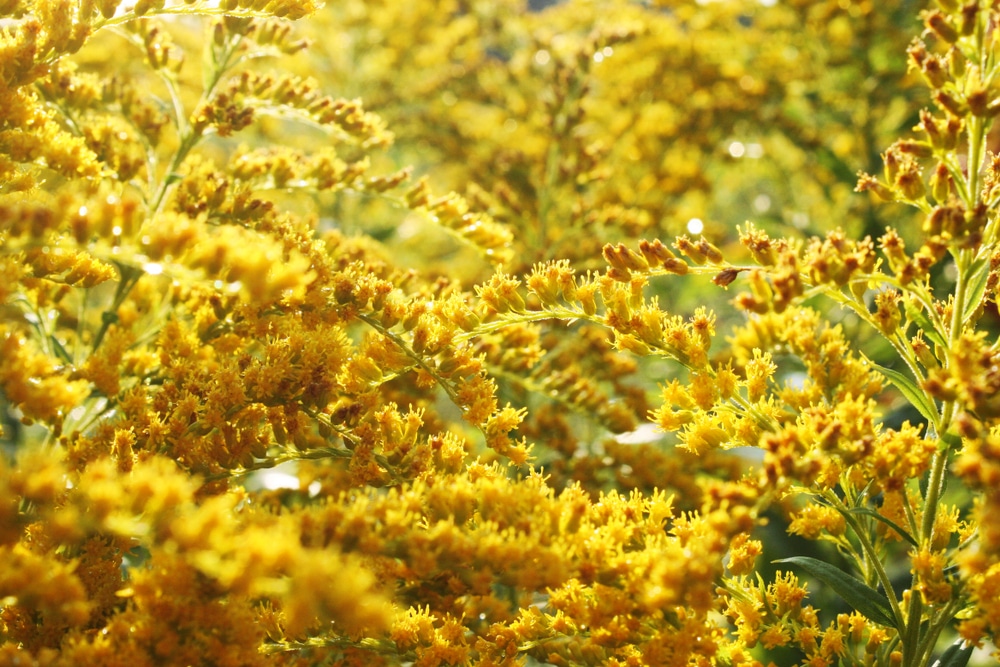
Goldenrod grows in slender stalks, with bursts of tiny blossoms on the end of each. As the name implies, goldenrod blossoms are a dazzling golden-yellow color. When it comes to attracting butterflies, goldenrod is another winner.
Fill Your Butterfly Garden With Fragrant Flowers
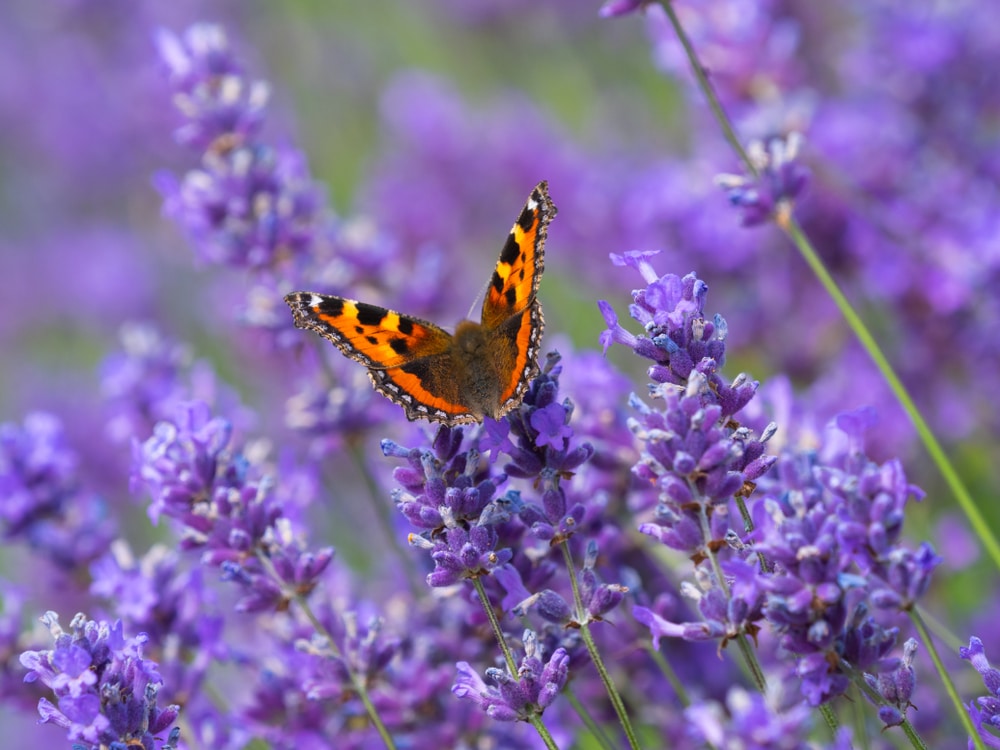
The next most important element of a butterfly garden is fragrance. Even when butterflies can’t see flowers, they can still smell them, and a strong scent suggests plenty of nectar.
Below are some examples of flowers with a fragrance butterflies love.
Milkweed
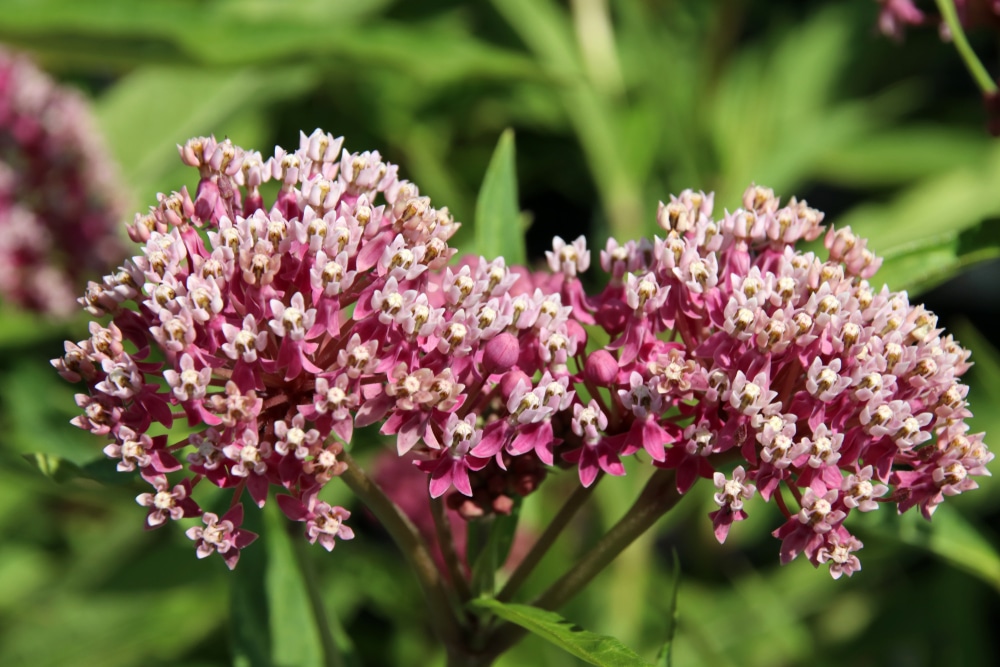
You may have heard of milkweed already, as it’s famous for attracting monarch butterflies (this is where they lay their eggs). What you might not know is this simple plant smells heavenly. Its scent is strong and sweet, with a hint of spice. It’s been compared to vanilla, and all sorts of butterflies are drawn to it.
Lavender

Lavender is one of the most popular scents in the world. It’s sweet and pungent yet soothing and not overwhelming to the senses. It has a lovely fragrance that will attract a few butterflies to your yard.
Verbena
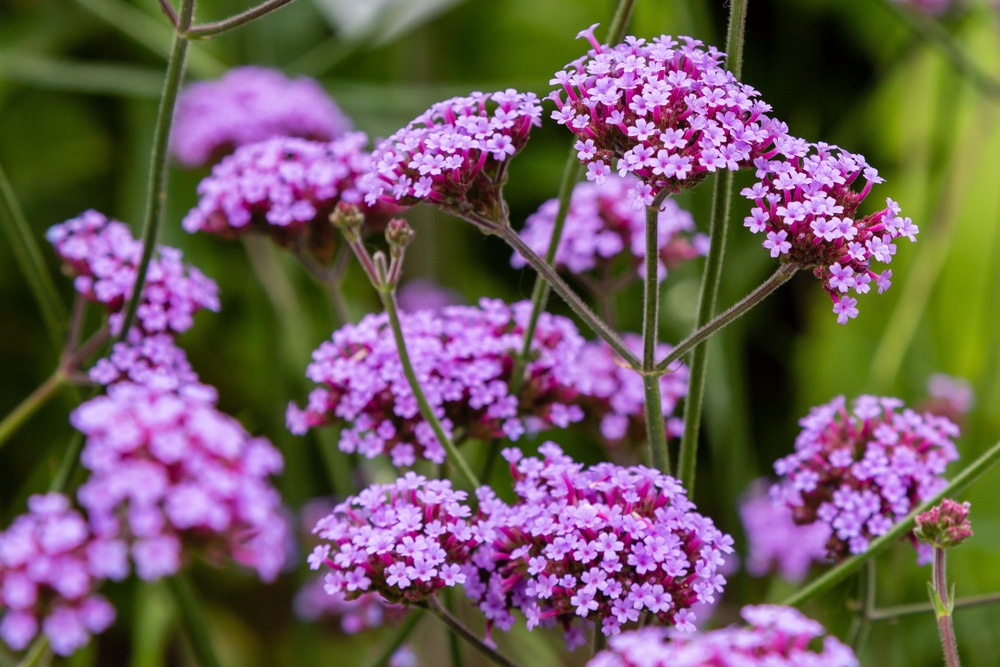
Verbena flowers have a sweet, lemony scent butterflies can’t resist. Plant this lovely little flower in your garden, and some butterflies will stop by.
Daylilies
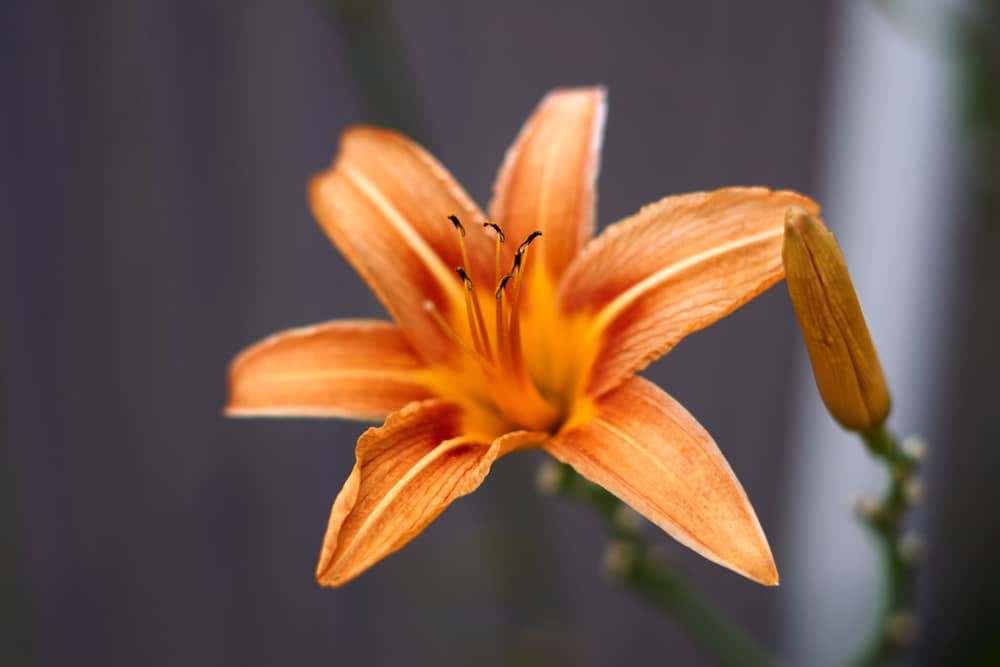
Some daylilies, such as the Hyperion variety, have a lemony-sweet scent butterflies find quite appealing. These beautiful, trumpet-shaped flowers should do the trick when attracting butterflies with smell.
Nepeta (Catnip)
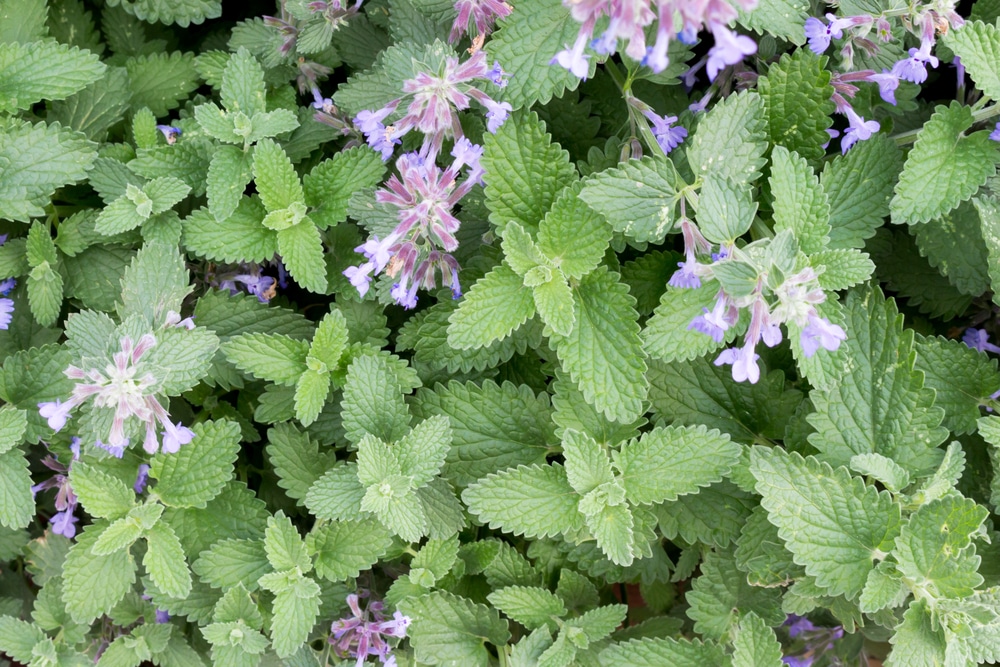
Few know this, but nepeta (catnip) attracts butterflies as well as cats. They love the mild minty smell.
Phlox
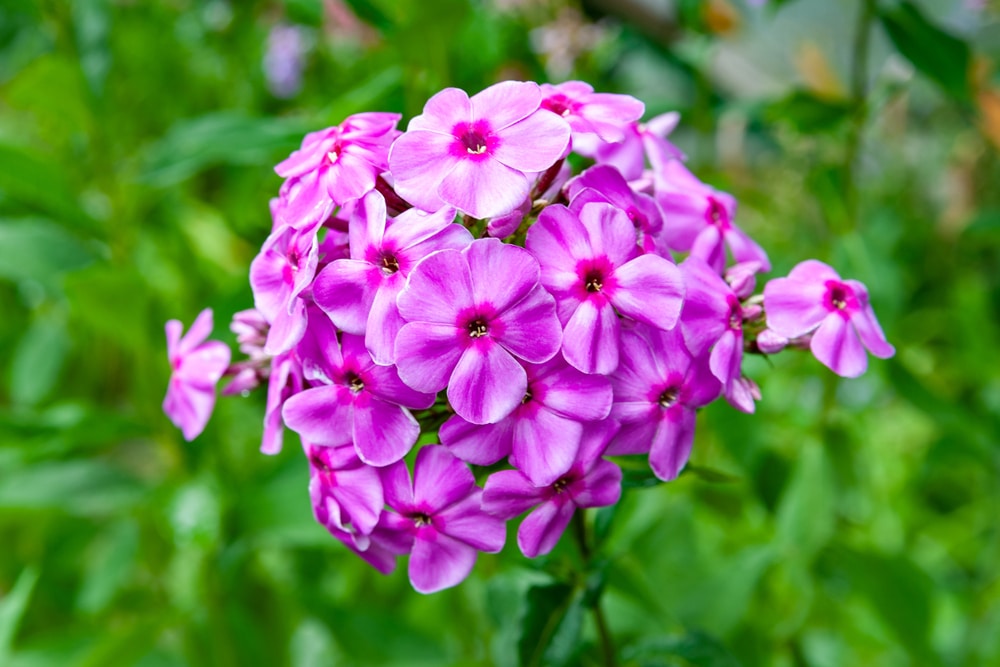
Phlox has a naturally sweet, mellow fragrance. Butterflies and people alike enjoy its pollen-and-honey smell. Plant some of it in your garden (especially in bright colors), and you will definitely draw in some butterflies!
Make Sure Your Garden Blooms From Spring To Fall
If you’d like to keep butterflies around all year except winter, you must plan accordingly. Pay attention to when flowers bloom, and make sure you’ve got plants that bloom one after the other during the spring-fall. This way, butterflies (and other nectar-seeking pollinators) know they can always depend on your garden for nectar.
Here’s a list of great butterfly-garden flowers and when they bloom:
- Daffodils: bloom in spring (February-May)
- Peonies: bloom in spring (May)
- Yarrow: blooms in spring-summer (April-October)
- Verbena: blooms in spring-fall (May-October)
- Milkweed: blooms in late spring and at the end of summer (May-August)
- Roses: bloom in summer-fall (May-October)
- Coneflowers: bloom in summer (June-August)
- Daylilies: bloom in midsummer (June-July)
- Blazing stars: bloom in midsummer (July-August)
- Phlox: blooms from mid to late summer, depending on the variety (June-October)
- Zinnias: bloom in midsummer to early fall (June-September)
- Asters: bloom in late summer to early fall (August-September)
- Goldenrod: blooms from late summer to fall (July-October)
Choose Somewhere Sunny
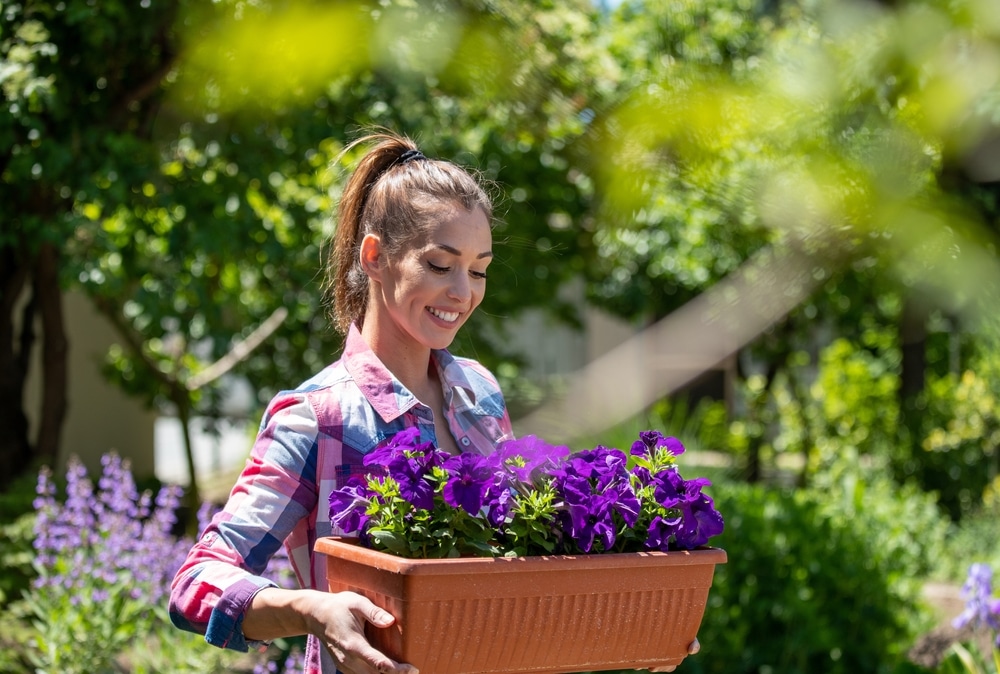
Now that you know what to plant in a butterfly garden, you’ll need to choose where to plant. While there may be several suitable spots in your yard, butterflies require plentiful sunlight to stay warm. South-facing gardens get the most sun exposure, making them ideal for what butterflies need.
Add In Sunbathing Rocks
Sometimes butterflies need a chance to warm up and catch their breath. A sunbathing rock is the perfect location for this. Place a few flat, gray rocks in a sunny spot to help them with this.
Keep Your Butterfly Garden Organic
If you truly want to invite butterflies into your garden, you must set the pesticides aside. These will kill any insect or weed, whether they’re a pest or not, including butterflies.
Provide The Butterflies With Shelter
Birds, reptiles, amphibians, and other creatures hunt for butterflies. Butterflies are also vulnerable to rain and strong winds. Butterflies need to take cover from predators and the elements. A pile of logs or rocks should do the trick.
Offer The Butterflies Water
Collecting nectar is thirsty work. A little-known fact is butterflies don’t get their water from nectar. Moreover, butterflies don’t drink straight from ponds, pools, etc., as those are drowning risks.
Instead, butterflies drink from mud since it has a safe surface to land on. You can save the butterflies in your garden some trouble by providing them with a shallow container of sand/soil yourself.
Simply soak the sand/soil in water, with a couple of centimeters extra on the surface. This should give your local butterflies a safe place to drink!
Provide Sugar Water
Butterflies will flock to sugar water, which is basically homemade nectar. All you need to do is combine three teaspoons of sugar with each cup of water until you have enough sugar water to fill a butterfly feeder (homemade or store-bought). Boil the water and sugar until the sugar has completely dissolved, let it cool, and fill it!
Include A Salt Lick
Last but not least, while butterflies get plenty of sugar from nectar, they don’t get much salt from it. Instead, they get salt from supplemental sources like sweat, manure, and mud. You can help nourish your butterfly visitors and give them salt by adding just a few (three or so) tablespoons of salt to the dish of mud water mentioned above.
Final Advice
While it may seem like there’s a lot to do for a butterfly garden, making one is easy. You don’t have to do everything in one day, either. Instead, work on a few of the steps when you can. When you’re done with them, see what results you get, then go from there!

